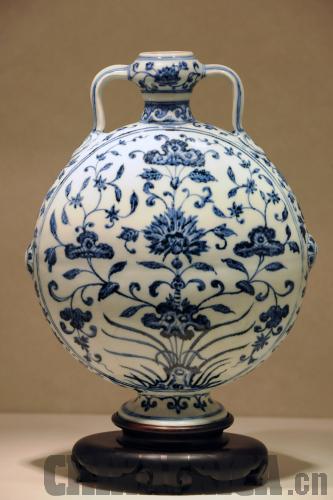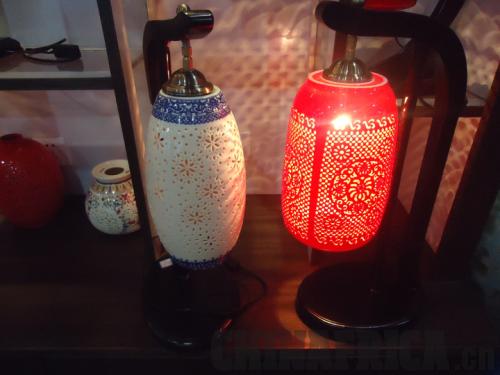| 
Chinese porcelain, also called fine china, is a necessity of Chinese people's daily life. It is used for making all kinds of items, such as bowls, dishes, cups, tea sets, and - in ancient China - even pillows. Sophisticated workmanship elevated the craft to a fine art.
Fine china is a symbol of the country, representing the implicit elegance of Chinese culture. Porcelain is also a bridge of Chinese and foreign cultural exchange. Westerners have prized Chinese porcelain since ancient times. The identical spelling is no mere coincidence.
The earliest porcelain dates back to Shang Dynasty in 1700 B.C., but fine porcelain was not produced until the Eastern Han Dynasty (25-220). Then ancient Chinese built kilns to fire ceramics in Changnan, now Jingdezhen, in south China's Jiangxi Province. The techniques for making porcelain matured during the Tang Dynasty (618–907), when chinaware were exported to Europe on a large scale as a luxury item.
The popularity of Chinese porcelain among Europeans is familiar to people. However, few know that this Chinese creation also shares a strong historic bond with Africa. In the Ming Dynasty (1368–1644), the fleet of the famed Chinese explorer Zheng He once visited coastal cities in East Africa, including Malindi and Mombasa in Kenya. This was the earliest record of Chinese people arriving in East Africa on a large scale. Ancient Chinese porcelain was once excavated in a small town called Lamu. Lamu Island is a major trade hub in the shipping line in the Indian Ocean, where Zheng's fleet had to pass.
Jingdezhen, a distinguished porcelain production area, had achieved prosperity in the porcelain trade with advanced production techniques. With the development of society, changes in China's politics and economy as well as mechanization in porcelain production, the craft is gradually fading away. Much precious folk craftsmanship, including that of producing traditional Chinese porcelain, is in the risk of extinction as few people worked on carrying them on. The traditional techniques of making ceramics in Jingdezhen, known as "porcelain capital," are especially endangered and urgently need protection.

In recent years, the protection of Jingdezhen's traditional craft of making porcelain attracted common concerns from the government and private sectors. China's Ministry of Culture included Jingdezhen's traditional porcelain craft among the country's first items of intangible cultural heritage. The local government launched projects to fire the kilns again for renewed production. In recent years, the government introduced business model to promote the preservation of the technique with market stimulus. Usually, commercial development is contradictory with protecting intangible cultural heritage. Not so with porcelain.
"The better the technique is preserved, the more value the industry will have for commercial development and vise versa," said Liu Yuanchang, a grand master of Chinese arts and crafts, in an interview with Economic Information.
Many ceramic artists from China and abroad come to Jingdezhen to learn and exchange techniques. African people's interest in Chinese porcelain has also been reignited. In 2007, a set of stamps themed in Chinese modern ceramic arts by Ren Ruihua, a professor with Jingdezhen Ceramic Institute, was issued in Guinea-Bissau. About six modern ceramic works by Ren were printed in the stamps.
|